New earthquake swarm under Cumbre Vieja volcano, La Palma, Canary Islands
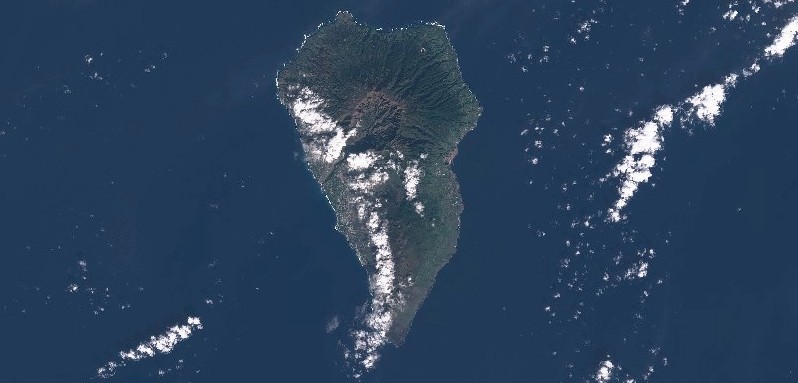
A new seismic swarm started under Cumbre Vieja volcano, La Palma island, Canary Islands at 21:26 UTC on December 23, 2020. The alert level remains at Green (1 of 4) — Carry out your activities normally. Since 2017, Cumbre Vieja has experienced 7 seismic swarms — 1 in 2017, 1 in 2018, and 5 in 2020. The last eruption of this volcano took place in 1971 (VEI 2).
According to the Volcanological Institute of Canary Islands (INVOLCAN), the swarm consists of small-magnitude events at depths between 20 and 30 km (12.3 – 18.6 miles).
From 21:26 UTC on December 23 to 07:38 UTC on December 26, a total of 602 earthquakes have been detected, of which 126 have been located.
The epicenters are mainly on the western slope of Cumbre Vieja.
Since the beginning of the series, the maximum magnitude of the localized earthquakes is 2.3 mbLg. So far, the energy released in the form of earthquakes in the present series reaches a value of 6×109 Joules.
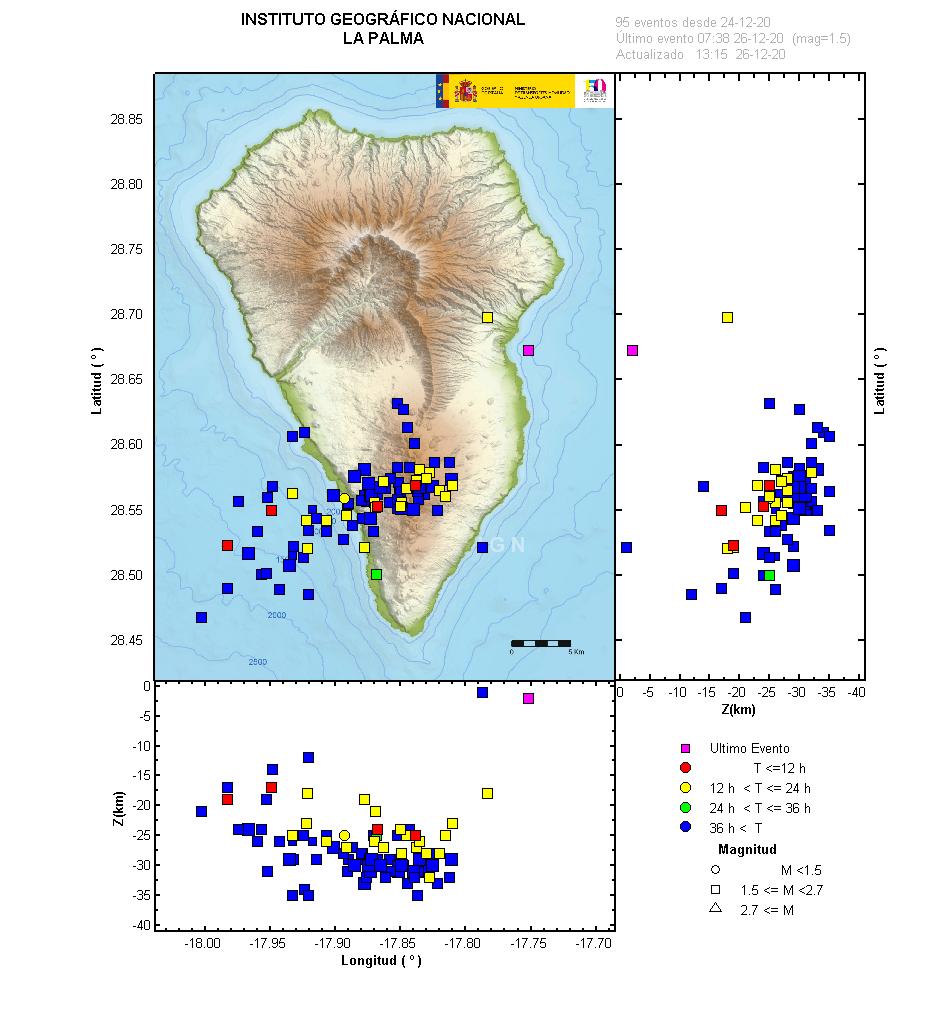
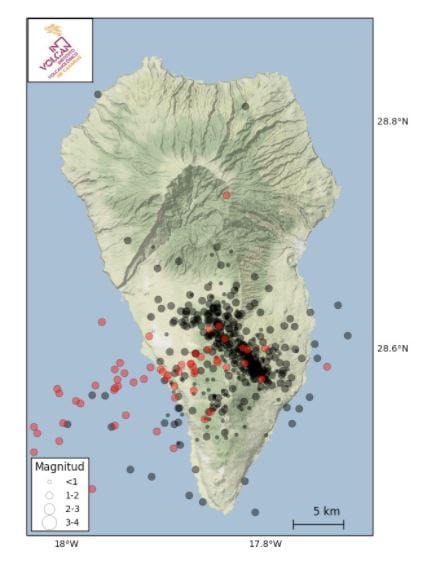
Red markers show epicenters of new earthquakes, black markers represent seismicity recorded over the past 3 years. Credit: INVOLCAN
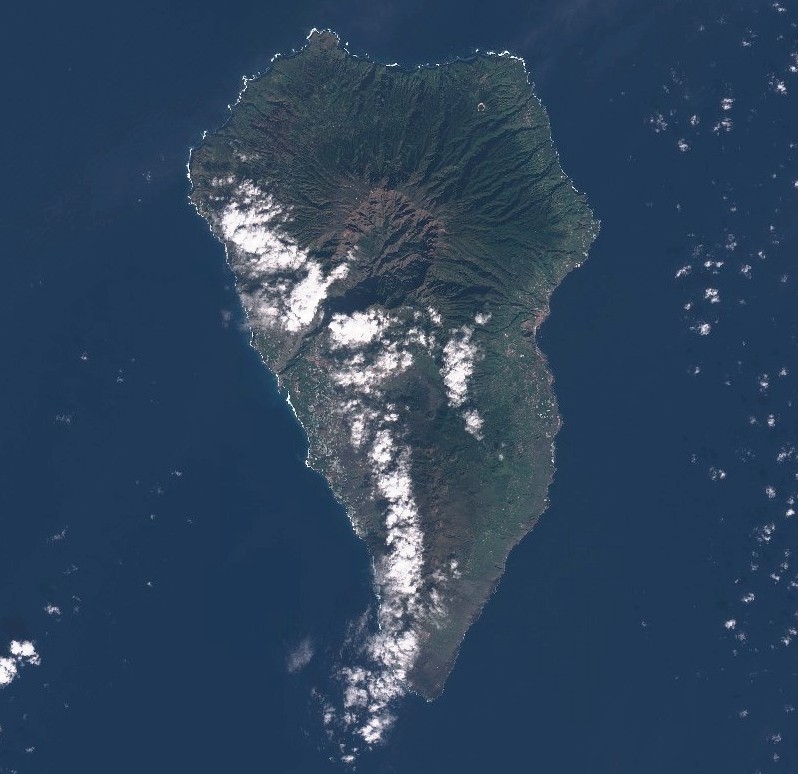
La Palma island, Canary Islands on December 19, 2020. Credit: Copernicus EU/Sentinel-2, TW
No significant horizontal and vertical displacements have been recorded over recent years.
This new seismic swarm does not pose a danger to residents and visitors to La Palma given the small magnitude and depth of earthquakes, the institute said. In the short and medium terms, it also does not reflect a significant change in volcanic activity.
Since 2017, Cumbre Vieja has experienced 7 seismic swarms — 1 in 2017, 1 in 2018, and 5 in 2020.
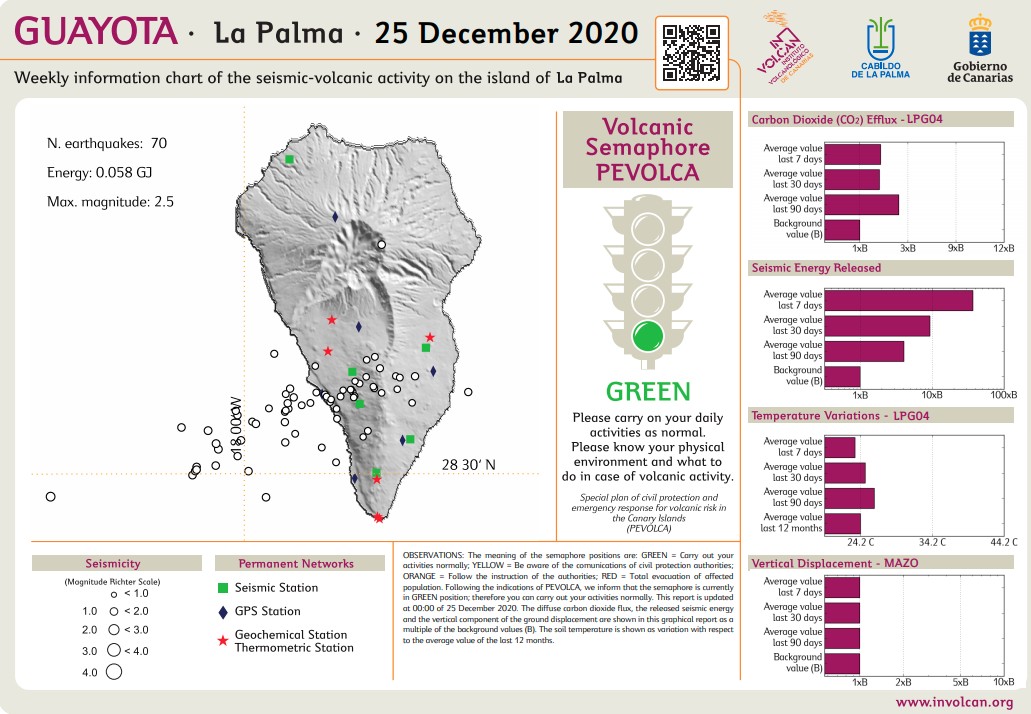
Geological summary
The 47-km-long (29 miles) wedge-shaped island of La Palma, the NW-most of the Canary Islands, is composed of two large volcanic centers. The older northern one is cut by the massive steep-walled Caldera Taburiente, one of several massive collapse scarps produced by edifice failure to the SW.
The younger Cumbre Vieja, the southern volcano, is one of the most active in the Canaries.
The elongated volcano dates back to about 125 000 years ago and is oriented N-S. Eruptions during the past 7 000 years have originated from the abundant cinder cones and craters along the axis of Cumbre Vieja, producing fissure-fed lava flows that descend steeply to the sea.
Historical eruptions at La Palma, recorded since the 15th century, have produced mild explosive activity and lava flows that damaged populated areas.
The southern tip of the island is mantled by a broad lava field produced during the 1677-1678 eruption. Lava flows also reached the sea in 1585, 1646, 1712, 1949, and 1971. (GVP)
Featured image: La Palma island, Canary Islands on December 19, 2020. Credit: Copernicus EU/Sentinel-2, TW

Commenting rules and guidelines
We value the thoughts and opinions of our readers and welcome healthy discussions on our website. In order to maintain a respectful and positive community, we ask that all commenters follow these rules:
We reserve the right to remove any comments that violate these rules. By commenting on our website, you agree to abide by these guidelines. Thank you for helping to create a positive and welcoming environment for all.